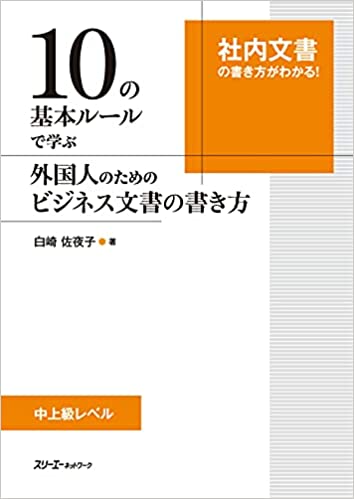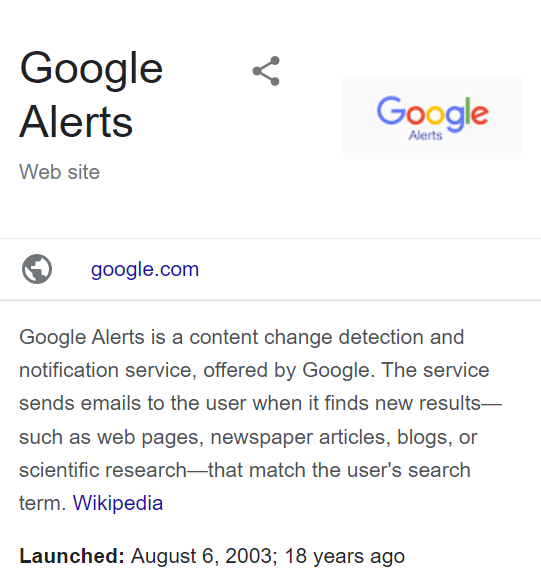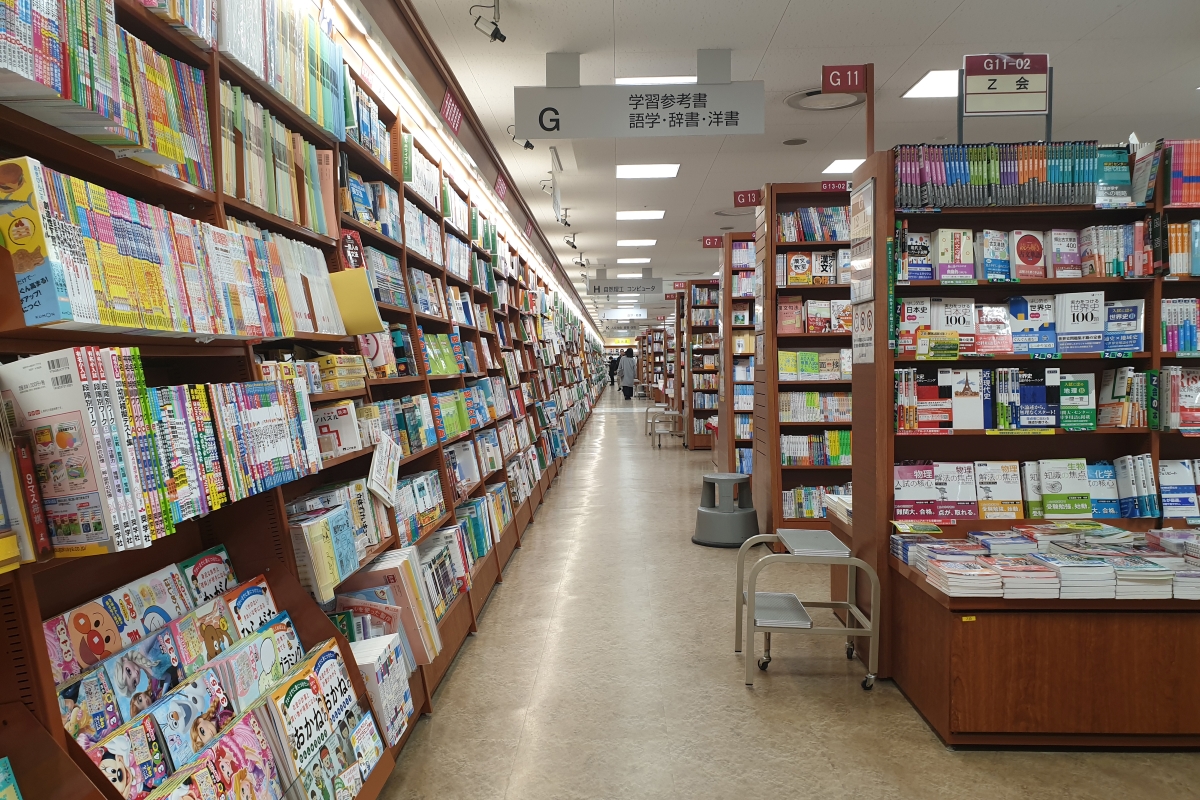I cannot keep up with meetings conducted in Japanese. Are there any good ways to study?
August 16, 2022
There are several reasons why it is difficult to keep up with the content of meetings, including
(1) Multiple people speak.
(2) The development of the conversation is irregular.
(3) Prerequisite knowledge, such as industry knowledge, is necessary to understand.
(4) The speed is fast.
(5) Many proper nouns and abbreviations are used.
(6) No listening materials for meetings.

Now, let’s consider countermeasures for each of the above reasons.
It will be difficult to change (1) and (2) due to the nature of the meeting.
However, there may be a possibility to have the meeting management devise a way to make it easier to listen. In a company with a high level of diversity, there is a possibility that they will actively try to devise such a way. You should consult with your supervisor or senior staff.
Regarding (3), as I mentioned in another article, I recommend reading industry newspapers to increase your knowledge of the industry.
Regarding (4), if you can understand if you have someone speak slowly, speed training is effective.
Japanese audio materials are usually spoken clearly and slowly so that even learners can easily understand them. If you are used to that, the actual meeting will seem very fast. So, when you listen to the audio material, try listening to it at 1.25x or 1.5x. Also, if you are taking lessons, you can ask your teacher to speak faster so that you can keep up with the meeting.
(5) As for proper nouns and abbreviations, it will be difficult to predict what will appear before the meeting, so you should make an effort to reduce the number of unlearned words. If an unfamiliar proper noun or abbreviation comes up in a meeting, ask a colleague or senior staff member to teach you and accumulate notes on it. You may also search for “XX industry glossary” to find industry terms commonly used in your industry. Check it out once.
(6)What is said at meetings is usually not disclosed to outsiders, making it difficult to study for the meeting.Therefore, if possible, it is also useful to practice recording the meeting with a voice recorder and then listening to it again. (This method usually requires permission from the company.)
If that is not an option, it is a good idea to find audio or video that is similar to the content of the meeting. If it is a panel discussion related to your business, you may be able to find it on Youtube or other sites.
I searched for “panel discussion” and found the following video
マイクロソフト×NewsPicksビジネスセミナー/パネルディスカッション(Microsoft x NewsPicks Business Seminar / Panel Discussion)
https://youtu.be/-eGdtoBSmFE
「エンゲージメント」を高めて「強い組織」をつくるには?(How to Create a Strong Organization by Increasing Engagement?)
https://youtu.be/5l_KYZTyewI
Web API でビジネスをスケールする方法:コチラ現場です!(How to Scale Your Business with Web API: Here’s the scene!)
https://youtu.be/GktSEf1JCGM
None of them have a lot of views, but you can listen to the interactions that are similar to those at the conference.
There are not many textbooks that specialize in the study of writing, but there are several. And I recommend the following textbooks.
「10の基本ルールで学ぶ 外国人のためのビジネス文書の書き方」
「タスクで学ぶ日本語ビジネスメール・ビジネス文書」
「日本語ビジネス文書マニュアル」
「日本語でビジネスメール ―書き方の基本と実用例文」
「しごとの日本語 メールの書き方編」
I was able to ask Shirasaki-san, the author of the topmost textbook, about the key to developing business writing skills, so let me share her comments with you.
—————————————————————–
Many people have problems with business documents, such as “I don’t know what to write and how to write it,” or “It takes too much time to write. There are three key points to developing your business document writing skills.
(1) Master the “expressions” of business Japanese.
The most important aspects of “expression” in business documents are “accuracy” and “conciseness. To achieve this, please pay attention to the following four points.
(a) Written language, not spoken language
(b) Honorifics
(c) Headings
(d) Bullet points
If you find these difficult, meeting minutes or event invitations written by others may be helpful.
(2) Master the “formats” of business Japanese.
There are general “formats” of business documents. The “formats” differs between documents for external and internal use. Some companies have detailed rules for layout and items to be written.
If you find these difficult, documents written by your seniors or internal document rule books (if available at your company) may be helpful.
(3) Check from the reader’s perspective.
Be sure to read over the business documents you have created. If it is difficult to have a Japanese colleague or senior colleague check it, try using the following checklist.
☑ Is the “conclusion” you want to convey to the other party properly written?
☑ Are the items in the correct order and are there any omissions?
☑ Are the sentences short and simple?
☑ Are there any errors in proper nouns, numbers, or notations?
☑ Check whether it is intended for internal or external use, and whether it is written in an appropriate style.
—————————————————————–
In Shirasaki’s book, you can learn the 10 rules that foreign learners of Japanese are likely to make mistakes (such as stylistic unification), and then learn how to structure “daily reports,” “training reports,” “minutes,” “request for approval,” and “proposals,” which are frequently prepared by businesspersons. If you are interested, please check it out. https://amzn.to/3Lqgqxe

Yes, there is. And there’s a recommended way to collect only sentences relevant to your business, and automatically!
It’s a bit old fashioned, but my recommendation is GOOGLE ALERT!
https://www.google.com/alerts

You can register keywords of interest and it will deliver them to you by e-mail when news related to them is released. For example, if you are an M&A advisor, you can register “上場(IPO) “”資金調達(fundraising) “”業務提携(business alliance) “, etc. If you support Japanese companies entering the U.S. market, you can register “アメリカ進出(U.S. market entry)” and so on.
I always recommend that businesspersons learn Japanese by using tools that are useful for their work, and this approach may lead to great business opportunities.
It is important to be able to set up the best keywords for each of your business and interests. If you are not sure, please message me individually and I will come up with the best keywords for you.
I do not recommend it to my clients. Many teachers recommend newspapers for reading practice, though. This is because the content in newspapers is not always what you are interested in, due to the wide range of information. Also, since the news is basically news, the content is often current affairs and not suited to deepening one’s knowledge.
Many teachers recommend the Nihon Keizai Shimbun that is the most widely read economic newspaper in Japan for students of business Japanese, but I do not recommend the Nihon Keizai Shimbun for the same reason. Of course, reading both regular newspapers and the Nihon Keizai Shimbun is better than not reading them.
But I recommend a more effective method. That is to read industry-specific newspapers.

For example, 日経ソフトウェア for programmers, 日経NETWORK for network engineers, 小売経済新聞 for retailers, 化学工業日報 for chemistry, 日刊自動車新聞 for automotive, 金融経済新聞 for finance, 食品産業新聞 for food and drink, etc. Basically, Every industry has its own industry-specific magazine.
If the topic is related to the industry you work in or the industry of your customers, it will be easier to understand because you will know many of the words. It will also help you to keep up with the latest information and deepen your understanding of the industry. You will also have more topics for conversation.
We recommend that you ask your Japanese colleagues and customers about your industry-specific newspapers.
Yes, there are some. I believe that magazines that are beneficial not only for reading comprehension practice but also for improving your business skills and increasing your knowledge are good. Therefore, I recommend the following four magazines.

No1: DIAMONDハーバード・ビジネス・レビュー (19,033 copies)
https://www.dhbr.net/ud/backnumber
The Japanese edition of the Harvard Business Review, composed of a combination of HBR articles and original articles from the Japanese edition. It is composed of a combination of HBR articles and original articles from the Japanese edition, and has timely feature articles with substantial content.
Although it has a smaller circulation in Japan than the next magazine, this magazine is probably the best fit for LinkedIn users, as its content is geared toward executives and business leaders. Also, reading the Japanese version after understanding the content of the original English version will be less burdensome.
No2: 週刊東洋経済(85,833 copies)
https://str.toyokeizai.net/magazine/toyo/backnumber/
In addition to feature articles that are in tune with the times, it also has many features on various companies, allowing you to keep abreast of the seasonality of the Japanese economy.
No3: PRESIDENT (263,383 copies)
https://presidentstore.jp/category/MAGAZINE01/
This magazine was launched in 1963 as the Japanese edition of the U.S. magazine FORTUNE. It covers a wide range of topics from skill development to lifestyle.
Although it is described as a magazine for executives and business leaders, I have the impression that it is aimed at a slightly younger audience than DIAMOND Harvard Business Review. Be careful not to be misled by the title PRESIDENT.
No4: 週刊ダイヤモンド (85,833 copies)
https://www.diamond.co.jp/magazine/h58i5c0000010kuq.html
In addition to economic, financial, and corporate information, it has a wealth of serial articles and columns, but most of the content is aimed at relatively young employees.
It is good for those whose reading comprehension is already high and who want to collect a wide range of information.
The best study materials will vary depending on your current Japanese language level, the environment in which you use Japanese, the nature of your work, your position, etc. We hope this article will be helpful to you.
*This post is based on “10 Japanese business magazines recommended for business Japanese learners!” which was uploaded on July 17, 2018. which is modified for LinkedIn users.
https://j-os.com/ja/japanese-business-magazine-top-10-recommended-for-business-japanese-learners/
*The number in parentheses next to the title is the average circulation per issue of the most recent issue. (Source: Japan Magazine Publishers Association)
*The links to each magazine are the URLs of the back issues so that the trends can be seen.
For beginner to intermediate level, I recommend that you master the audio material included with the Business Japanese textbook to build basic business Japanese language skills.
For intermediate to advanced level, I recommend using material that is actually being listened to by Japanese businesspeople.
In addition to podcasts, another popular audio medium these days is Voicy. I have collected a number of Voicy channels that cover Japanese business and business news and hope you will find them useful.

[ちょっと差がつくビジネスサプリ]
https://voicy.jp/channel/880
Channel of the Graduate School of Management, Globis University, a Japanese business school.
Mainly introduces and explains business skills and the latest keywords. You can easily listen to it for about 5 minutes a day. It is aimed at slightly younger businesspersons. Executives may find much of the content well-known.
[ながら日経]
https://voicy.jp/channel/865
Channel of Nihon Keizai Shimbun, Japan’s largest economic newspaper.
Updated every morning with the latest news. You can kill two birds with one stone as you can practice listening with economic news. However, since business covers a wide range of genres, the information tends to be broad and shallow.
[Voicy ITビジネスニュース]
https://voicy.jp/channel/480
A 10-minute news channel with news about IT and startups.
Many of the topics are news about IT business and venture companies and fundraising.
It is like an IT and venture version of the aforementioned “ながら日経.
[論語と算盤と私とボイシー]
https://voicy.jp/channel/621
Mr. Asakura’s channel mainly invests in startups at the rater stage.
The main topics are startups, VC, and venture investment. Recommended for those interested in Japanese venture business.
[西野さんの朝礼]
https://voicy.jp/channel/941
This is the channel of Nishino, a comedian, picture book author and film director.
Although most of the topics are related to entertainment, there are also many marketing strategies and IT business topics. As a comedian, his stories are interesting.
Are there any good apps for learning kanji?
April 19, 2022
The following applications were popular among Japanese language teachers and learners.

Learn Japanese! – Kanji
https://apps.apple.com/us/app/learn-japanese-kanji/id1078107994
Kanji GO – Learn Japanese
https://apps.apple.com/jp/app/kanji-go-learn-japanese/id1484053581
Jakeipuu – For WaniKani
https://apps.apple.com/jp/app/jakeipuu-for-wanikani/id1527863953
JLPT : Japanese Kanji N3 N2 N1
https://apps.apple.com/jp/app/jlpt-japanese-kanji-n3-n2-n1/id1542899846
KANJI Memory Hint 1 (入門レベル80)
https://apps.apple.com/jp/app/kanji-memory-hint-1-english/id1168530345
KANJI Memory Hint 2 (初級レベル180)
https://apps.apple.com/jp/app/kanji-memory-hint-2-english/id1199696428
KANJI Memory Hint 3 (初級レベル195)
https://apps.apple.com/jp/app/kanji-memory-hint-3-english/id1401093144
Yes, there are many.

These textbooks are mainly designed for business people and include the following types.
Keigo practice, Business conversation practice, BJT preparation, Industry-specific Japanese (e.g. IT business Japanese), For job hunting, For new employees, For business manner, etc.
They also vary in difficulty, ranging from those for people with JLPT N5 or so to those for people with JLPT N1 or higher.
Volunteer members of our Japanese teachers have set up a website to explain the Business Japanese textbooks. On this website, they first divide the textbooks into 10 difficulty levels, and introduce a total of 32 textbooks from 12 publishers. You will be able to choose the one that best suits your level.
http://app.j-os.com/japanesematerial/business-en.html in English
http://app.j-os.com/japanesematerial/business.html in Japanese
*Newer textbooks or revised editions may have already been published. In that case, please refer to the newest information.
It is very difficult to answer what textbooks we recommend. This is because each textbook has its own characteristics, and the best textbook for each person is different.

When I am consulted by a client, I choose a textbook after asking at least the following questions
Learning objectives, learning method (self-study or taking lessons), current level, textbooks used in the past, and other materials and tools available.
If you know a professional Japanese teacher, it is best to consult him or her. However, you need to check how much textbooks he/she can handle. (Please assume that advice from someone with less than 10 textbooks will not be helpful.)
If there is no professional Japanese language teacher you know, you need to be able to judge for yourself. Therefore, we have listed some points that you should understand when choosing textbooks on your own, and we hope they will be helpful.
——————————-
There are different types of textbooks.
——————————-
The main types of textbooks for adult learners are as follows
(Comprehensive textbooks / for business people / for short-term residents / reading comprehension / grammar / pronunciation and listening comprehension / notation (kana and kanji) / composition / conversation / preparation for the Japanese Language Proficiency Test)
The “List of Japanese Language Materials” published by Bonjinsha introduces approximately 4,000 Japanese language materials. It is possible to search by the types listed above. Moreover, it can be downloaded free of charge, so if you are interested, please take a look.
——————————-
Amazon reviews are not helpful.
——————————-
I often use Amazon for online shopping. However, reviews about Japanese textbooks will not be helpful. This is because most of the people who write reviews are Japanese language learners, and they do not compare the textbooks with other textbooks.
——————————-
Textbook introduction sites are also not very helpful.
——————————-
Many textbook introduction sites are affiliate sites. Check if the writers are reliable.
The official websites of publishers may be helpful, but they naturally introduce only their own textbooks, which has the disadvantage of limiting the range of textbooks they cover.
——————————-
Clerks at general bookstores know very little about Japanese textbooks.
——————————-
General bookstores sell very few Japanese language textbooks. For this reason, it would be difficult for the clerks working there to compare and introduce Japanese textbooks.
On the other hand, you can trust the staff at stores specializing in Japanese language textbooks because they are very knowledgeable. Bookstores specializing in Japanese language materials include the following bookstores
Bonjinsha: Chiyoda-ku, Tokyo
https://www.bonjinsha.com/
Sogakusha: Chiyoda-ku, Tokyo
http://www.sogakusha.co.jp/index.html
Nihongo Books: Koto-ku, Tokyo
https://books-online.jp/
*Please check the official websites of the companies for the latest information as it may not be possible to enter due to covid-19.
Can you recommend a Japanese school?
March 25, 2022
Many of my acquaintances are in the Japanese education field, so let me refrain from naming specific schools here (lol). Instead, there are two criteria that can be used as a reference when choosing a regular Japanese school, which I will introduce here.

Please note that what I am about to explain is for regular Japanese schools. It does not apply to schools for residents who are not related to the student VISA or online schools. There are many reputable schools among them.
(1) Must be a publicly notified Japanese school
Notified Japanese schools are Japanese schools that can accept international students for the purpose of studying Japanese under the status of residence Student. In simple terms, it is a school that can issue a student VISA.
In order to be recognized as a “notified school,” a school must clear several regulations set by the Japanese Ministry of Justice, so it is relatively safer than non-notified schools. Of course, there are exceptions.
A list of notified schools can be found here.
https://j-test.jp/souran/
(2) Year of establishment is old
Simply put, the older the year of establishment, the better the school is likely to be. This is due to the following changes in the environment surrounding the Japanese education business.
In 2008, the Japanese government created a plan to increase the number of foreign students to 300,000. In response to this plan, an increasing number of companies established Japanese schools as new businesses.
And since around 2015, there has been an increase in the number of cases of Japanese schools being established for the purpose of supporting businesses in recruiting technical intern trainees.
Mainly for these two reasons, the number of Japanese schools has more than doubled, from 308 in 2007 to 774 in 2019.
Source: https://toyokeizai.net/articles/-/275122
Entering into Japanese education as a business is not in itself a bad thing in my opinion. There are good schools among the new schools. However, on a probability basis, I would recommend schools that have been around since before 2015, preferably since 2008.
From the above, my recommendation is to go for a notified school that has been around since before 2015. However, management policies can change, so please use this as a reference only.
Categories
Recent Posts
- I cannot keep up with meetings conducted in Japanese. Are there any good ways to study?
- Are there any good writing materials for business Japanese? (Three keys to developing business Japanese writing skills.)
- Are there any free materials available for studying business Japanese reading?
- Should I read newspapers for reading practice in business Japanese?
- Are there any good business magazines to practice reading business Japanese?
Archives
- August 2022
- June 2022
- May 2022
- April 2022
- March 2022
- February 2022
- January 2022
- October 2021
- January 2021
- August 2020
- July 2020
- June 2020
- May 2020
- April 2020
- March 2020
- February 2020
- January 2020
- December 2019
- November 2019
- October 2019
- September 2019
- August 2019
- July 2019
- June 2019
- May 2019
- April 2019
- March 2019
- February 2019
- January 2019
- December 2018
- November 2018
- October 2018
- September 2018
- August 2018
- July 2018
- June 2018
- May 2018
- April 2018
- March 2018
- February 2018
- January 2018
- November 2017
- October 2017
- July 2017
